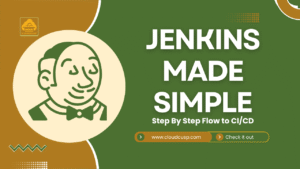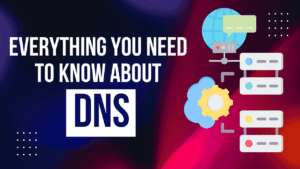Research suggests that Apache Kafka is a powerful tool for handling real-time data streams, but it can seem complex at first. It seems likely that understanding its basics can help developers build scalable applications, though debates exist on its setup overhead for small projects. The evidence leans toward Kafka being ideal for high-volume data environments, balancing speed and reliability while acknowledging alternatives for simpler needs.
- Distributed Streaming Platform: Kafka acts as a hub for real-time data, allowing systems to send, store, and process information efficiently across multiple machines.
- Key Components: Includes producers for sending data, consumers for reading it, topics for organizing streams, partitions for scaling, and brokers for managing storage.
- Strengths and Considerations: Excels in fault tolerance and high throughput, but requires careful configuration to avoid issues like data loss in edge cases.
On This Page
Table of Contents
Introduction to Apache Kafka: The Backbone of Real-Time Data
Picture this: In a world flooded with data—from social media clicks to sensor readings in smart devices—how do you keep everything moving without bottlenecks? That’s where Apache Kafka comes in. It’s an open-source, distributed event streaming platform that handles real-time data feeds with ease. Originally created at LinkedIn in 2011 to manage their massive activity streams, Kafka has evolved into a cornerstone for data-heavy applications. Think of it as a super-efficient postal service for data: It collects messages from senders (producers), stores them securely in sorted boxes (topics and partitions), and delivers them to receivers (consumers) on demand.
Unlike traditional databases that store static data or simple queues that handle one message at a time, Kafka is built for continuous streams. It combines the best of messaging systems (like RabbitMQ) and log storage (like a commit log in version control), offering high throughput, low latency, fault tolerance, and scalability. This means it can process millions of messages per second without breaking a sweat, making it perfect for modern apps that need instant insights.
To get a sense of its impact, companies like Netflix use Kafka to handle over a trillion messages a day for user recommendations and monitoring. But don’t worry if you’re new— we’ll unpack it all without jargon overload.
Understanding Kafka Messages: The Building Blocks
At the heart of Kafka is the message (also called a record or event). It’s the smallest unit of data, like a single email in your inbox. Each message has three main parts:
- Headers: Optional metadata, such as timestamps or custom tags, to add context.
- Key: A way to group related messages, often used for organization (e.g., a user ID).
- Value: The actual data payload, which could be text, JSON, or binary.
This structure keeps things efficient. For instance, if no key is provided, messages are spread randomly across storage areas. But with a key, similar messages stick together, which is great for ordered processing.
The Coffee Shop Order System
Think of Kafka messages like orders at a bustling coffee shop. The header is the customer’s name and time stamp on the cup. The key could be the type of drink (e.g., “latte” ensures all lattes are handled by the same barista station). The value is the details: “extra foam, almond milk.” Producers (customers) place orders, and consumers (baristas) process them. If the shop gets slammed, Kafka’s design ensures no orders are lost or duplicated.
Topics and Partitions: Organizing the Chaos
Messages don’t float around aimlessly—they’re filed into topics, which are like folders or categories for data streams. A topic might be “user-clicks” for website interactions or “sensor-data” for IoT devices. Topics are append-only, meaning once a message is added, it’s there in sequence, like entries in a journal.
To handle big loads, each topic is divided into partitions—think of them as sub-folders or lanes on a highway. Partitions allow parallel processing: Multiple consumers can read from different partitions at once, boosting speed. Each partition is an ordered log with unique offsets (like page numbers) to track what’s been read.
| Component | Description | Example |
|---|---|---|
| Topic | Category for messages | “order-updates” for e-commerce transactions |
| Partition | Sub-division of a topic for parallelism | Topic with 4 partitions distributes load across 4 servers |
| Offset | Sequential ID for messages in a partition | Message at offset 5 was read; resume from offset 6 after a restart |
This setup is key to Kafka’s scalability. Start with one partition for small apps, then add more as data grows.
Example: In a ride-sharing app like Uber, a “ride-requests” topic might have partitions based on cities. Messages with the same key (e.g., user ID) go to the same partition, ensuring a driver’s app sees requests in order.
Producers: The Data Senders
Producers are the apps or services that create and send messages to Kafka. They’re like reporters filing stories—they batch messages to reduce network chatter and use partitioners to decide where each goes. If a key is set, the partitioner hashes it to pick a consistent partition; otherwise, it’s round-robin.
Producers are resilient: They retry sends if a broker fails and can acknowledge when messages are safely stored.
Example: Java Producer
Here’s a basic Java example to send messages (assuming Kafka is running locally):
import org.apache.kafka.clients.producer.*;
import java.util.Properties;
public class BasicProducer {
public static void main(String[] args) {
Properties props = new Properties();
props.put("bootstrap.servers", "localhost:9092");
props.put("key.serializer", "org.apache.kafka.common.serialization.StringSerializer");
props.put("value.serializer", "org.apache.kafka.common.serialization.StringSerializer");
Producer<String, String> producer = new KafkaProducer<>(props);
for (int i = 0; i < 10; i++) {
producer.send(new ProducerRecord<>("my-topic", "key" + i, "Hello, Kafka! Message " + i));
}
producer.close();
}
}This code connects to Kafka, sends 10 messages to “my-topic,” and cleans up. In real apps, add error handling for production use.
Consumers and Consumer Groups: The Data Processors
On the flip side, consumers read messages from topics. They pull data (unlike push systems), tracking progress with offsets stored in Kafka itself. Consumers join consumer groups for teamwork: Partitions are divided among group members, so if one fails, others take over via rebalancing.
This ensures no duplicates and uninterrupted flow. Different groups can read the same topic independently—for example, one for analytics, another for alerts.
The Restaurant Kitchen
Kafka is like a busy restaurant kitchen. Producers are suppliers delivering ingredients (messages) to storage areas (topics). Partitions are separate shelves for organization. Consumers in a group are chefs sharing duties: One handles appetizers (partition 1), another mains (partition 2). If a chef calls in sick, the group rebalances tasks. The offsets are like checklists marking what’s been prepped, so nothing’s forgotten.
Example: Java Consumer
A matching consumer to read those messages:
import org.apache.kafka.clients.consumer.*;
import java.util.Collections;
import java.util.Properties;
import java.time.Duration;
public class BasicConsumer {
public static void main(String[] args) {
Properties props = new Properties();
props.put("bootstrap.servers", "localhost:9092");
props.put("group.id", "my-group");
props.put("key.deserializer", "org.apache.kafka.common.serialization.StringDeserializer");
props.put("value.deserializer", "org.apache.kafka.common.serialization.StringDeserializer");
KafkaConsumer<String, String> consumer = new KafkaConsumer<>(props);
consumer.subscribe(Collections.singletonList("my-topic"));
while (true) {
ConsumerRecords<String, String> records = consumer.poll(Duration.ofMillis(100));
for (ConsumerRecord<String, String> record : records) {
System.out.println("Received: " + record.value() + " (key: " + record.key() + ", offset: " + record.offset() + ")");
}
}
}
}This loops to poll messages, printing them out. In practice, commit offsets manually for control.
Brokers and the Kafka Cluster: The Infrastructure
A Kafka cluster is a group of brokers—servers that store and serve data. Each broker manages partitions, with replication for safety: A leader handles reads/writes, while followers sync as backups. If a leader fails, a follower steps up.
Older versions used ZooKeeper for coordination, but newer ones shift to KRaft (Kafka Raft) for simpler setups without external dependencies.
Retention Policies and Durability
Kafka doesn’t delete messages right after consumption; retention policies let you keep them based on time (e.g., 7 days) or size (e.g., 1 GB). This durability means consumers can replay old data for audits or recovery.
Scalability and Fault Tolerance
Kafka shines in scaling: Add brokers to handle more load, increase partitions for parallelism. Fault tolerance comes from replication—set a factor of 3, and data survives two broker failures.
| Feature | Benefit | Potential Drawback |
|---|---|---|
| Scalability | Horizontal growth by adding nodes | Requires monitoring to avoid imbalances |
| Fault Tolerance | Replication and automatic failover | Increases storage use |
| High Throughput | Processes millions of messages/sec | Needs tuned configs for peak performance |
Applications: Where Kafka Excels
Kafka isn’t just theory—it’s everywhere. For log aggregation, it collects logs from thousands of servers for tools like ELK Stack. In real-time event streaming, apps like Twitter (now X) use it for live feeds.
The Highway System
Data streams are like cars on a multi-lane highway (topics with partitions as lanes). Producers are on-ramps adding traffic, consumers are off-ramps pulling it off. Brokers are toll booths managing flow, with backups (replication) like detour routes. During rush hour (high load), add lanes for smooth travel.
Example: In healthcare, Kafka syncs patient data across systems via change data capture (CDC), ensuring databases stay in harmony. Retail giants like Walmart use it for inventory tracking, processing stock updates in real time to prevent shortages.
For IoT, sensors send metrics to a “device-events” topic; consumers analyze for alerts, like detecting machine failures.
Getting Started: Setup Tips
To try Kafka:
- Download from the official site.
- Start ZooKeeper and a broker.
- Create a topic:
kafka-topics.sh --create --topic test --bootstrap-server localhost:9092 --partitions 1 --replication-factor 1 - Use the producer/consumer examples above.
Remember, for production, use clusters and monitor with tools like Kafka Manager.
Kafka supports exactly-once semantics to avoid duplicates, integrates with Kafka Streams for processing, and Kafka Connect for linking to databases. It’s versatile, but watch for common pitfalls like uneven partition distribution.
WrapUP
In summary, mastering Kafka fundamentals opens doors to robust data systems.
Kafka’s APIs make integration easy – Producer for sending, Consumer for reading, Streams for transforming, Connector for linking to databases. For beginners, start with a local setup and tools like Kafka Connect for ETL processes—pulling data from sources, tweaking it, and loading elsewhere. Compared to websockets (direct real-time chats), Kafka adds persistence and scalability for broader uses. It’s not a replacement for databases but complements them by handling the live flow while databases store structured results.
As we’ve explored, Apache Kafka transforms how we handle data streams, making complex tasks feel manageable.

FAQs
What is Apache Kafka?
In simple terms, Kafka is software that deals with data that’s always coming in, like a never-ending river of updates from sensors, websites, or apps. Unlike a regular database that holds finished info, Kafka treats data as events—think “user clicked buy” instead of just “sale total.” This event-driven way lets you replay the “movie” of what happened to analyze trends or fix issues. Big names like Netflix use it to stream billions of viewer actions daily for personalized suggestions.
How does Apache Kafka work?
It starts with producers pushing events into topics, which are split into partitions stored on brokers. Consumers pull what they need, tracking progress with offsets. If a broker fails, copies on others take over. Analogy: It’s like a busy kitchen where chefs (producers) prep ingredients (data) on counters (topics), divided into stations (partitions). Waitstaff (consumers) grab orders without the kitchen stopping, and backups ensure no dish is lost.
What is a topic in Kafka?
Topics group related events, acting as channels. You might have one for “user logins” and another for “payments.” Example: In a ride-sharing app, a “ride requests” topic collects location data, letting map services and drivers subscribe without direct links.
What are partitions in Kafka?
These divide topics for parallel work, with each holding a sequence of events. More partitions mean more speed. If you have 10 partitions, up to 10 consumers can read simultaneously. In IoT, partitions handle sensor data from different regions without bottlenecks.
Who are producers and consumers in Kafka?
Producers generate and send events, while consumers fetch and act on them. They don’t talk directly—Kafka mediates. Example: A weather app (producer) sends temperature updates; a dashboard (consumer) displays them.
What is a consumer group?
A way to team up consumers for shared reading. One group might analyze data for reports, another for alerts. If you add members, work redistributes automatically.
What happens during Kafka rebalancing?
The system pauses briefly to reassign partitions when group size changes, ensuring fair load. It’s like reshuffling seats at a table when guests arrive or leave.
What is an offset in Kafka?
A unique number marking each event’s spot in a partition. Consumers use it to resume after pauses, preventing skips or repeats.
How does Kafka store data?
On server disks, with replication for backups. Retention policies let you decide keep times, useful for audits. Unlike short-term queues, it holds data longer.
What is a Kafka broker?
Servers that store and manage data flow. They coordinate without doing the actual work on data.
Why should I use Kafka?
For its speed in real-time tasks, fault-proof design, and ability to scale. It’s better than basic tools for high-volume streams.
What are some common uses for Kafka?
Log collection, event streaming, database syncing, monitoring. Healthcare uses it for patient updates; retail for stock tracking.
How is Kafka different from other messaging systems like RabbitMQ?
Kafka stores replayable streams; RabbitMQ focuses on quick, one-off deliveries. Kafka scales via partitions; RabbitMQ via consumer additions.
What is the role of ZooKeeper in Kafka?
It managed cluster info and leaders, but newer Kafka uses KRaft internally.
Can Kafka handle large messages?
Yes, with adjustable limits for batches. Batch small ones for best performance.







